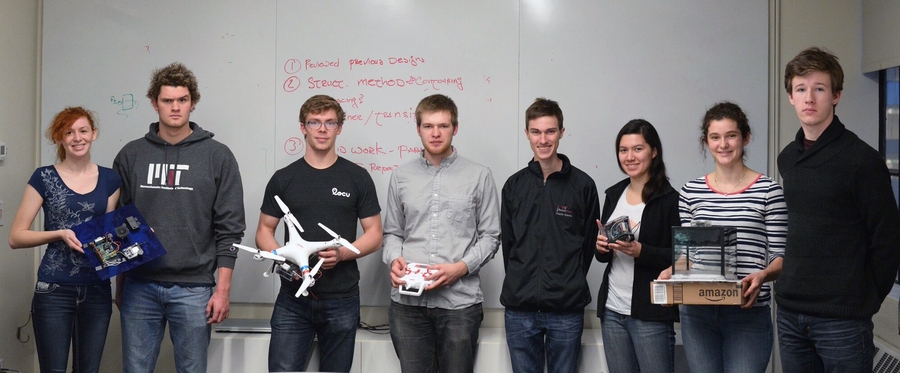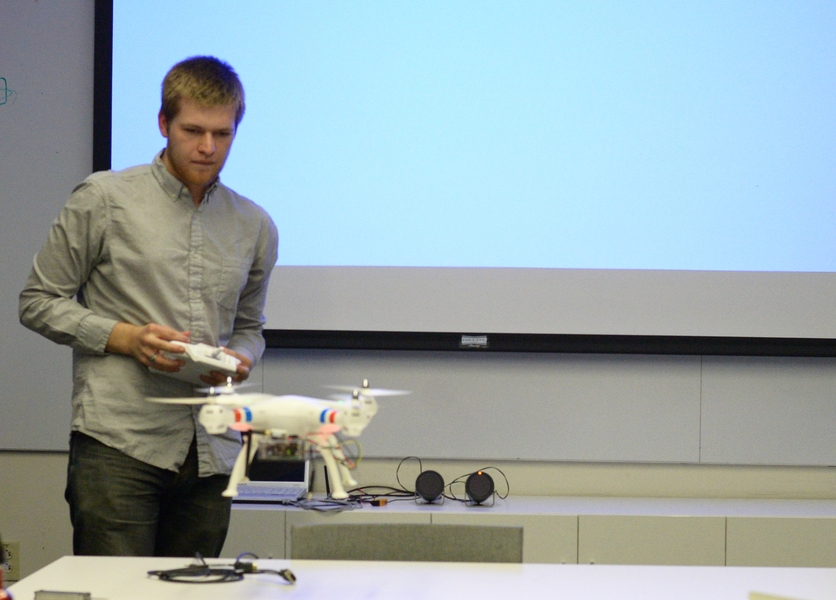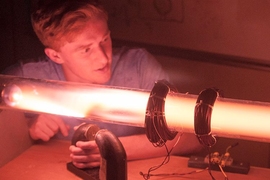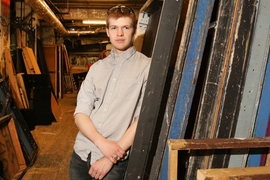This fall, the students of 22.011 (Seminar in Nuclear Science and Engineering and DIY Geiger Counters) in the Department of Nuclear Science and Engineering (NSE) embarked on a different adventure compared to previous years. Led by NSE Professor Michael Short, the seminar took a hands-on approach to learning the basics of radiation physics, and using it in a useful product.
“The value of 22.011 is that it teaches students at the very beginning of their education that nuclear science and engineering is so much more than textbooks and problem sets: It’s about identifying real-world opportunities to apply radiation measurement and nuclear physics, innovating and persevering on an instrument to capitalize on the opportunity, and effectively communicating their work to their peers,” said NSE research scientist Zach Hartwig.
The first annual radiation-aware product design seminar proceeded in three phases:
1. Build, test, tune, and confirm operation of a hand-held Geiger counter with pulse digitization.
2. Use the Geiger counter to experimentally derive the laws of basic radiation physics (detector dead time, efficiency, dose vs. distance, dose vs. shielding, source calibration, accuracy, precision, statistics, background radiation).
3. Incorporate the Geiger counter into a new, radiation-aware product to fulfill a certain purpose.
In phase 3, students presented design sketches to each other and members of the MIT International Design Center (IDC), outlining the device they wanted to build and why. They were then given feedback on how to refine their focus and implement their ideas. Working in teams of two or three and with a budget of $250, students collaborated to develop and build prototypes of their products. Weekly check-ins ensured good progress and feedback at every stage of the process, while in-class lab and building sessions provided individualized, hands-on assistance by the instructors and graduate student assistants from NSE.
The teams produced four products:
- a Geiger counter-equipped quadcopter drone, with real-time wireless transmittance of dose rates via audio signals;
- a cosmic ray discriminating cloud chamber, which uses a small box of supersaturated ethanol vapor, a Raspberry Pi, a camera, and image-processing software to record radiation tracks by nucleating ethanol droplets as they move through the cloud;
- a radiation altimeter, equipped with a time-stamping GPS to determine the relationship between altitude and background dose; and
- a radiation musical instrument, whose note-selection algorithm uses the count rate and time between pulses to choose the next note to play in a certain key.
Teams presented their products during the final class meeting at the IDC to professors, research scientists, and fellow students from MIT. NSE professor Jacopo Buongiorno, who attended the presentation, said, “Suddenly I was watching a rocket-mounted Geiger counter flying into the sky to measure background radiation as a function of altitude, a radiation detection quadcopter, beautiful nuclear particle trajectories materializing in a home-made cloud chamber, and music generated by the random radioactive decay of Cobalt-60. What our undergraduates can accomplish in only eight weeks, with their creativity and a $250 budget is simply astounding!”
Students enrolled in the class were from a number of departments and ranged in year from freshmen to seniors.











